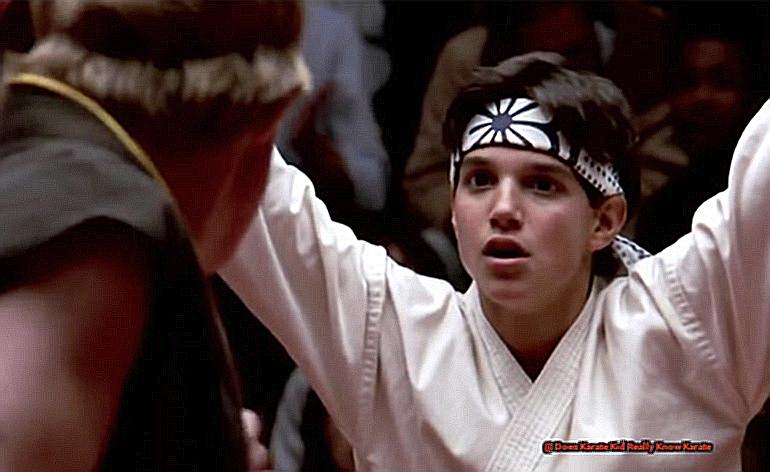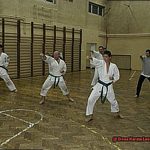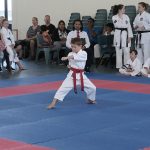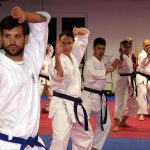For decades, the Karate Kid has held a special place in the hearts of audiences, captivating us with its iconic training montages and inspiring message of perseverance. But beyond the flashy moves and heartwarming story, lies a deeper truth about the true skills of the Karate Kid.
Contrary to popular belief, the martial art form depicted in the movie is not Japanese karate, but rather Okinawan karate. This distinction may seem minor, but it speaks to the authenticity and accuracy of the film’s portrayal of karate.
Moreover, as we witness Daniel LaRusso’s journey from bullied newcomer to confident fighter, we see that true karate mastery goes beyond physical prowess. The discipline and mental fortitude displayed by Daniel are essential components of mastering this ancient martial art.
Throughout the film, we also see a strong emphasis on balance and control – not just in terms of physical movements but also in one’s mindset. This is a crucial aspect of traditional karate and is exemplified through Daniel’s training and his final fight scene.
One cannot discuss karate without mentioning kata – intricate forms that are an integral part of traditional training. In Daniel’s final showdown against his rival Johnny Lawrence, we see these forms come to life as he unleashes his inner strength and determination.
But perhaps the most important lesson learned by the Karate Kid is not about winning or losing, but about finding inner strength and overcoming obstacles. It is this message that has resonated with audiences for generations and solidifies this film as a timeless masterpiece.
So join us as we delve into the true skills of the Karate Kid and discover what makes this movie so much more than just another coming-of-age sports drama.
Does Karate Kid Really Know Karate?
When evaluating the true karate skills and knowledge of the Karate Kid, there are several important factors to take into account. These include an actor’s training and experience, their commitment to martial arts outside of their role, and the authenticity and practicality of their on-screen movements.
Firstly, it’s crucial to acknowledge that not all actors who portray skilled fighters in movies or TV shows possess real-life martial arts abilities. While some may have prior training, others may have only acquired basic skills during filming. Therefore, it’s essential to examine an actor’s level and quality of training before assessing their karate expertise.
Moreover, it’s important to consider whether an actor continues to practice martial arts outside of their acting role. This displays their dedication and passion for the art form, suggesting a deeper understanding and skill level. For instance, William Zabka, known for playing Johnny Lawrence in Cobra Kai, has remained dedicated to practicing martial arts even after his role in The Karate Kid.
Furthermore, analyzing the authenticity and practicality of an actor’s on-screen movements can offer valuable insights into their martial arts knowledge. In Cobra Kai, for example, the show focuses more on technical movements rather than flashy acrobatics, which is a more realistic approach to fighting. This can indicate that the actors have a better grasp of martial arts principles and techniques.
In conclusion, accurately assessing if the Karate Kid truly knows karate requires careful consideration of various factors such as training, dedication, and practicality.
The Impact of the Karate Kid Movies on Society
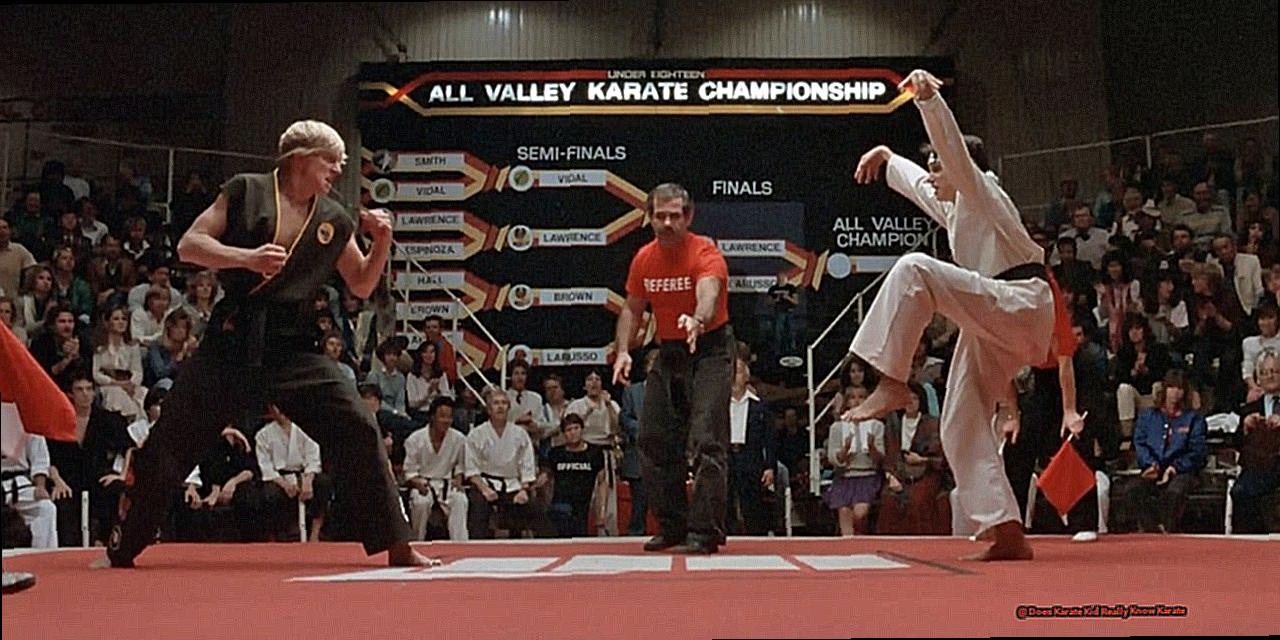
The Karate Kid movies have had a profound impact on society’s views and understanding of karate. Through its enduring themes and unforgettable characters, the films have brought recognition to karate as more than just a fighting form but as a means for self-improvement. Moreover, the movie has ignited a fascination in martial arts among young audiences who aspire to follow in the footsteps of Daniel LaRusso. Let’s take a deeper look at how the Karate Kid movies have influenced society’s perception and understanding of karate.
Impact of Themes and Characters
One of the most significant effects of the Karate Kid movies on society is through its themes and characters. The protagonist, Daniel LaRusso, learns essential life lessons through his training with Mr. Miyagi, including the value of hard work, respect, dedication, facing fears, finding balance, and humility. These themes have struck a chord with viewers and have impacted their attitudes towards karate and personal growth.
Moreover, Mr. Miyagi’s portrayal as a wise and patient mentor has also left an indelible impression on audiences. His teachings on discipline, resilience, and inner strength have motivated many to pursue karate and strive for personal growth.
Promoting Karate as a Discipline for Self-Improvement
The Karate Kid movies have played a vital role in promoting karate as more than just a fighting form but as a means for self-improvement. By showcasing the physical and mental benefits of karate, the film has shed light on its true purpose as a tool for self-development. This has challenged the stereotype that martial arts are solely about aggression and violence.
Iconic Symbols and Catchphrases
The use of bandanas as a symbol of strength and determination in the film has become iconic in popular culture. This has further cemented the impact of the Karate Kid movies on society by creating memorable symbols associated with karate.
Moreover, catchphrases like “wax on, wax off” and “sweep the leg” have become household phrases, solidifying the films’ influence on society.
Inspiring Future Generations
The popularity of the Karate Kid movies has sparked an interest in martial arts among young viewers. Many have been inspired by Daniel LaRusso’s journey and aspire to be like him. This has resulted in a surge in enrollment in karate classes and a renewed interest in the discipline.
In conclusion, the Karate Kid movies have had a significant impact on society’s views and understanding of karate. Through its timeless themes, iconic characters, and promotion of karate as a means for self-improvement, the films have left an enduring impression on viewers.
The Training and Techniques Used in Karate
The main techniques and methods used in the training of Karate are known as kihon, kata, and kumite. These elements work together to develop a practitioner’s skills and knowledge in this martial art.
- Kihon: The foundation of Karate is known as kihon. This includes basic techniques such as kicks, punches, blocks, and stances. Before moving on to more advanced techniques, these fundamental skills must be mastered. Kihon helps to develop muscle memory, balance, coordination, and proper body mechanics.
- Kata: The formal practice of predetermined movements in a slow and methodical manner is known as kata. This helps to teach correct form, technique, breathing, muscle memory, and focus. Practicing kata also helps to develop discipline, mental focus, and patience.
- Kumite: The sparring aspect of Karate is called kumite. In this controlled setting, practitioners use their techniques to develop self-confidence and a better understanding of their self-defense capabilities. It provides an opportunity to practice speed, reaction time, practical self-defense skills, strategy, and focus.
In addition to these core elements, there are various training methods that can be used to improve a practitioner’s skills in Karate. These include:
- Shadowboxing: Practicing techniques in front of a mirror helps to improve form, balance, and coordination.
- Heavy bag work: Striking a heavy bag allows for full power and strength training while also developing technique.
- Self-defense drills: Partner drills help simulate real-life scenarios and improve the practical application of techniques.
- Sparring: Controlled sparring with a partner allows for the application of techniques in a realistic setting.
The combination of these training methods and techniques contributes to the overall skills and knowledge of a practitioner in Karate.
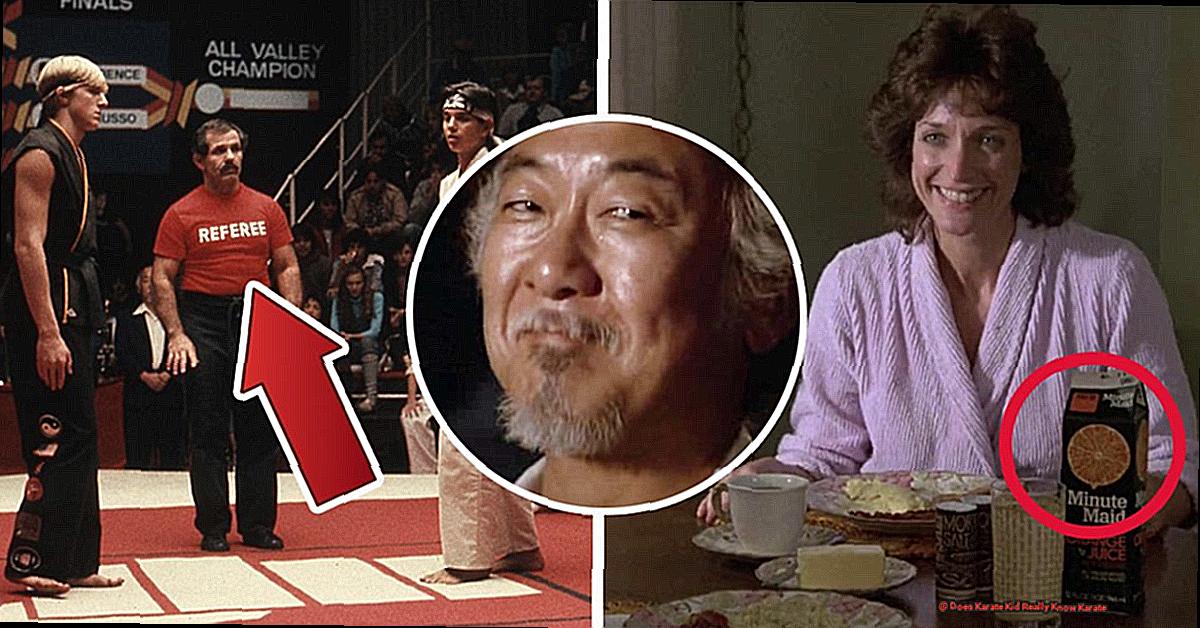
The Role of Martial Arts in Hollywood and the Entertainment Industry
The way martial arts are depicted in Hollywood and the entertainment industry has greatly affected the representation and perception of karate and other forms of martial arts. Prior to the 1960s, martial arts were largely unknown in the Western world. However, with the success of Chinese-produced kung fu movies in Hollywood, particularly those starring Bruce Lee, a fad was ignited that influenced pop culture in various ways.
One of the primary ways in which Hollywood has influenced how martial arts are perceived is through their portrayal in films and TV shows. These portrayals often showcase martial arts as a physical and spiritual discipline, placing emphasis on its mental and philosophical aspects rather than just its physical components. This shift has helped to change the perception of martial arts from being solely about fighting to also encompassing self-improvement and personal growth.
Furthermore, Hollywood’s depiction of martial arts as a means of displaying physical prowess and skill has inspired countless individuals to take up training in various disciplines. This surge in interest has led to an increase in popularity for martial arts schools and training methods such as shadowboxing, heavy bag work, self-defense drills, and sparring. The rise in popularity of these training methods not only improves the public’s understanding of martial arts but also promotes physical fitness.
In addition, Hollywood’s influence can be seen in fashion trends as well. Martial arts-inspired clothing gained popularity in the 1970s and 80s, further solidifying the impact of martial arts on popular culture.
In recent years, as viewers become more culturally aware, we have witnessed a shift towards more authentic and culturally sensitive portrayals of martial arts in Hollywood. This is evident in TV shows like “Cobra Kai,” “Into the Badlands,” and “Warrior,” as well as on streaming platforms like Netflix with original series such as “Iron Fist” and “Wu Assassins.” These portrayals not only spotlight different styles of martial arts but also shed light on their cultural significance and history.
To sum it up, the depiction of martial arts in Hollywood and the entertainment industry has played a pivotal role in shaping the perception and representation of karate and other forms of martial arts.
How Accurate is the Portrayal of Karate in the Karate Kid Franchise?
The Karate Kid franchise has undoubtedly played a significant role in popularizing karate and martial arts in the United States. However, while the film portrays the discipline, hard work, and perseverance required in martial arts training, there are some discrepancies in its portrayal of karate techniques and principles.
One of the main issues with the franchise’s portrayal of karate is the use of a mix of martial arts styles. While this may have been done for dramatic effect, it can be misleading for viewers who are not well-versed in martial arts. Moreover, the film presents a blend of different karate styles, which may not accurately reflect the techniques and principles of any particular style.
Furthermore, the Karate Kid franchise often exaggerates the power and effectiveness of karate techniques. In reality, martial arts training emphasizes control and restraint rather than aggression and violence. The film’s focus on defeating opponents through physical force does not align with the principles of martial arts.
Additionally, the franchise’s portrayal of karate often neglects its mental and philosophical aspects. While physical training is essential, it is equally important to develop mental strength, discipline, and self-awareness. These aspects are not highlighted in the Karate Kid franchise, leading to a skewed understanding of martial arts for viewers.
Does Ralph Macchio’s Dance Background Give Him an Advantage in Learning Karate?
Ralph Macchio’s experience as a dancer proved to be a valuable asset in his portrayal of Daniel LaRusso in the beloved 1984 movie, The Karate Kid. As a trained dancer, Macchio possessed a unique set of skills and qualities that seamlessly translated into the world of martial arts. With his expertise in body control, discipline, alignment, balance, rhythm, and timing, Macchio was able to learn and execute karate with remarkable precision on the big screen. His dance background proved to be vital in mastering the complex choreography and delivering an unforgettable performance as the iconic karate kid.
Macchio’s dance training played a crucial role in preparing him for his role as Daniel LaRusso. His experience with body control allowed him to execute each move with grace and fluidity, while his discipline and alignment enabled him to maintain proper form throughout the physically demanding fight scenes. In addition, his background in rhythm and timing gave him an advantage in learning the precise movements of karate.
Overall, Macchio’s dance background proved to be a significant advantage in his portrayal of Daniel LaRusso. His ability to excel in both disciplines highlights the similarities between dance and martial arts, demonstrating how one can enhance the other.
Realistic vs Flashy: Examining the Fighting Styles in Cobra Kai
While the fighting style showcased in Cobra Kai may appear flashy and captivating, it significantly differs from the realistic techniques used in karate. Let’s compare the two:
| Realistic Karate Techniques | Cobra Kai Fighting Style |
| Incorporates traditional stances and movements | Utilizes exaggerated and showy movements for visual appeal |
| Focuses on practical self-defense techniques | Prioritizes aggressive and flashy attacks |
| Emphasizes discipline, control, and respect | Encourages aggression, revenge, and winning at all costs |
| Uses minimal force to achieve maximum impact | Relies on brute strength and exaggerated force for impact |
As we can see from the comparison, the fighting style of Cobra Kai is more theatrical and geared towards entertaining rather than practicality. It deviates from the true essence of karate, which revolves around discipline, control, and respect.
Furthermore, relying on exaggerated movements and brute strength goes against the principles of karate. The art form emphasizes using minimal force to achieve maximum impact as relying solely on brute strength can be dangerous and ineffective in real-life situations.
Moreover, the emphasis on aggression, revenge, and winning at all costs in Cobra Kai goes against the core values of karate. The practice of karate prioritizes self-defense and personal growth over defeating others.
Hence, while the fighting style in Cobra Kai may seem impressive on screen, it does not accurately depict the realistic techniques used in karate.
Conclusion
In conclusion, while the Karate Kid franchise and Cobra Kai have captured our hearts with their iconic training montages and inspiring messages, they may not accurately depict the true essence of karate. The films’ focus on flashy moves and exaggerated techniques deviates from the discipline, mental fortitude, and balance that are essential components of mastering this ancient martial art.
This deviation can be attributed to the franchise’s mix of different styles and neglect of its mental and philosophical aspects. However, despite these discrepancies, the impact of the Karate Kid movies on society cannot be denied. Its enduring themes and unforgettable characters have promoted karate as a means for self-improvement and inspired future generations to pursue martial arts.
On the other hand, Cobra Kai’s fighting style may seem impressive on screen but goes against the core values of karate. It prioritizes aggression over control and winning at all costs over personal growth. While it may make for entertaining television, it strays far from the true principles of this ancient art form.
Therefore, while both franchises have their merits in terms of entertainment value, it is important to recognize the differences between realistic karate techniques and flashy Hollywood portrayals in order to truly understand this ancient martial art form. By delving deeper into its history, philosophy, and discipline, we can gain a better understanding of what it truly means to know karate.

